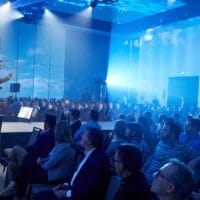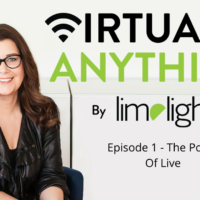CASE STUDY: Salesforce Pivots from Live to Virtual Event
By LimeLight Group
In February, Salesforce turned its World Tour Sydney conference into a virtual event in just 10 days. Here’s what they learned, along with tips for how you can do the same for your company.
Last month, due to the unprecedented situation with COVID-19, we spent 10 days pivoting Salesforce World Tour Sydney into a fully virtual event. This annual conference is Salesforce’s largest in the Asia Pacific region, attracting around 10,000 onsite attendees and taking more than six months to organize. Our reimagined event attracted almost 13,000 registered attendees and 80,000 Salesforce Live views.
As other companies face similar challenges, they too are pivoting flagship events to virtual spaces. This article is for those who are making the difficult decision to transform large-scale events from in-person to online. We share what we learned and how our experience can help you.
1. Know the facts and assemble your team
Despite the hurdles we faced on the path to this monumental shift, we realized there was an opportunity to do something special. Live streaming and conferencing tools are more available than ever before, and online events are far more affordable to produce. There’s also no indication online gatherings are a passing trend: Cisco predicts by 2022, 82% of all internet traffic will be video.
2. Create a shortlist for session content
Our World Tour Sydney team procured a broadcast location and then set to work on content programming. A war-room team was assigned within the first few hours.
On day one, we determined which of the event’s 150 sessions would translate best to a virtual format. We came up with a plan for the top 30 sessions and all the people needed to deliver them. Laney recommends working with the wider team on a need-to-know basis to stay on target and move fast.
3. Figure out how to keep your online audience engaged
Next, we unwrapped all the elements that were in place for the physical event. Piece by piece, we determined how to change direction with the resources on hand. A key part of this was outsourcing. Many of our suppliers were able to pivot to create an engaging online experience. Our audio visual production partner, for example, had extensive television experience. That meant it could quickly create a compelling multichannel digital experience.
We also considered what we could repurpose. Digital content developed to project onto the back wall of an exhibition hall was used as engaging backdrops for online sessions. The builders for the exhibition stands shifted their work to constructing studios where the content team could film sessions.
4. Prep the team for Live AV
Being on camera on a set is very different from being in front of a live audience. Speakers used to a live environment are now in a feedback vacuum, so they must project confidence to engage the audience. Show speakers what the set and overall experience will look like for viewers.
Encourage presenters to rehearse in front of a camera as early as possible. Then give them the opportunity to see what they look like while presenting. They can empathize with the viewer’s experience and change their delivery.
5. Keep internal and external stakeholders briefed
We decided to communicate directly with sponsors, partners, and customers about our pivot. “There’s nothing worse than hearing secondhand news that will materially impact your business,” Frank says.
For the most part, many stakeholders are in the same situation and will understand your decision. Since they have a stake in your event’s success, collaborate with them on shifting content programming if needed.
You can read the full article here.




